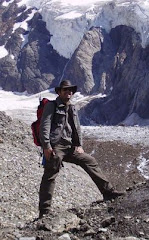Tetrapod tracks, trackways and related deformation structures can constitute an important source of paleontological and sedimentological information. Moreover, in recent times our knowledge of mammalian tracks in Holocene and Pleistocene (not only Jurassic) beach, dunes, washover fans and related environments, has been significantly increased by new discoveries. The main characteristics of sediments which play a significant role in track preservation are:
- Grain size, for example in coarse sediments anatomical features are less preserved
- Sediment macrofabric
- Sediment Cohesion
- The moisture content influences the sharpness of the shape, as well as clearly impressed or blurred tracks depend on water content
- Reworking of external agents, like waves and wind, depending on time of exposure and/or burial, can erode trackways.
- Also the tracemakers itself can prevent conservation, by further intensive trampling older tracks can be blur or destroyed, and also the slope and extent of vegetation cover during animal passing can avoid foot impressions. The behaviour gait and size of the tracemaker are also fundamental for preservation, for example deeply impress tracks by heavy individuals are more likely to be preserved.
The most suitable environment for trackways preservation are represented by tidal and flood plains, lagoons periodically subject to water level oscillations and even complete desiccation, and distal portions of washover fans, where moist, coherent, fine grained sediments are present. In areas of washover fans characterised by channels and barrens the preservation is less probable, influnced strongly by changing sedimentation dynamics.
Nevertheless mammals trampling on such a muddy to sandy sediment, still damp or wet, impress footprints that can easily be preserved if the sediment surface hardens, and then are covered by low-energy flooding, whose suspension load fills and buries tracks. During the transition Pliocene-Pleistocene, planteaters were present in coastal areas, such as beaches and dunes, where probably they were, as occurs nowadays, attracted by salt crusts.
Extraordinary examples of mammalian trackways can be found on the Italian Peninsula, ranging in age from Pliocene to Pleistocene on various sites in Sardinia, and the hill of Osoppo (North-Italy).
In Sardinia tracks and trackways attributed to the ichnogenus Bifidipes have been found on naturally exposed surface corresponding to originally stiff or firm sandy carbonate mud to pebbly sands on 6 localities. The ichnogenus Bifidipes (isp. aeolis) is also known of the Pleistocene of the Balearic Islands, where is was produced by the endemic artiodactyl Myotragus balearicus. The imprints of Sardinia where also assigned to an endemic middle-size artiodactyl -“Praemegaceros” cazioti, the only single cloven-hoofed artiodactyl present on the island during the Pleistocene.
Two main imprints associations were produced: simple tracks and, more frequentely, compound tracks. The morphology of the tracks is strongly related to the substrate conditions and to the sedimentary context, influencing the potential of preservation. Bifidipes shows similarities to tracks of modern Cervus elaphus and Dama dama, however the parameters indicates that the animal that left this tracks was slightly larger then the average fallow-deer, and smaller than adult males of C. elaphus.
 Pic.1. Trackways on pebbly coarse sandstones. Porto Paglia (Gonnesa), south-west Sardinia (from FANELLI et al. 2007).
Pic.1. Trackways on pebbly coarse sandstones. Porto Paglia (Gonnesa), south-west Sardinia (from FANELLI et al. 2007). Pic.2. Trampled bedding surface showing tracks. Sediment deposited within the tracks is locally preserved. Alghero (Nurra), north-western Sardinia. Below: Compound track on damp sand. Porto Paglia (Gonnesa), south-west Sardinia (from FANELLI et al. 2007).
Pic.2. Trampled bedding surface showing tracks. Sediment deposited within the tracks is locally preserved. Alghero (Nurra), north-western Sardinia. Below: Compound track on damp sand. Porto Paglia (Gonnesa), south-west Sardinia (from FANELLI et al. 2007).References: FANELLI, F.; PALOMBO, M.R.; PILLOLA, G.L. & IBBA, A. (2007): Tracks and trackways of “Praemegaceros” cazioti (Deperét 1897) (Artiodactyla, Cervidae) in Pleistocene coastal





Keine Kommentare:
Kommentar veröffentlichen